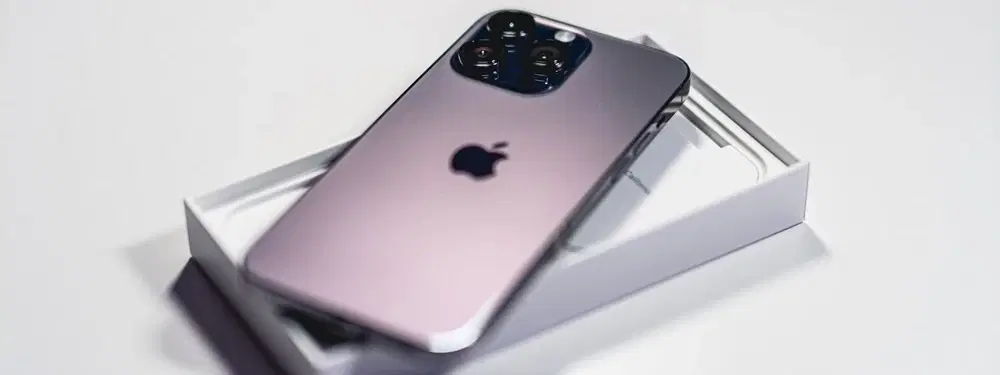
Consumer Electronics
•03 min read
Have you ever wondered how to connect your USB devices to your iPhone without a hitch? Whether you want to transfer files, connect external storage or use key accessories, this guide is here to walk you through every step in a simple, easy-to-understand way.
Your iPhone’s Lightning port is designed to offer both power and data transfer in one small connector. This unique feature means that using a certified Lightning to USB adapter is essential for a smooth connection. The adapter not only bridges the gap between your device and the USB accessory, but it also ensures that all security and power standards are met.
Many USB devices work well with the iPhone. You can connect external storage drives to access large files, attach keyboards for productivity, or even hook up cameras for quick photo transfers. However, it is important to check file formats and ensure that the USB device meets the power requirements of the iPhone for a seamless experience.
When it comes to connecting your USB device, the right adapter stands to make all the difference. For most scenarios, a Lightning to USB adapter is the go-to option. If you have a newer iPhone model that features a USB-C port, make sure to get the appropriate adapter. Look for high-quality products with certifications to guarantee a smooth, hassle-free connection.
Connecting an external storage drive is as simple as plugging in your USB drive with the correct adapter. Once connected, open the Files app on your iPhone to browse, transfer, or manage your data. This method lets you expand your storage options on the go, so you never have to worry about running out of space.
If you encounter issues such as your iPhone not recognising the USB device, start by checking the USB Accessories setting under Face ID & Passcode. Ensure that the device is certified, the adapter is in good condition, and any necessary power sources are available to support the accessory. Often, a simple toggle can resolve connectivity issues.
Pro Tip: Always Check Your iPhone’s Settings for USB Accessories
Did you know that iPhones have a USB Accessories setting under Face ID & Passcode? Toggle this on to ensure seamless connectivity with external devices, especially if your iPhone is locked.
Once your USB device is connected, the Files app becomes your best friend. It allows you to transfer photos, videos, documents and more between your iPhone and the external drive. The app supports common file formats and provides a straightforward interface to manage your data without any technical fuss.
For users who are looking for enhanced file management features, several third-party apps can make the process more comfortable. These tools provide extra features such as advanced sorting options and secure file transfers, making them ideal for handling more complex data needs.
There is a wide range of USB accessories available that can truly elevate your iPhone experience. Accessories like USB hubs help to connect multiple devices at once, while external keyboards can boost your productivity on the go. These additions are valuable in turning your iPhone into a more versatile tool, perfect for both work and play.
Before purchasing any accessory, check for compatibility with your iPhone model. Look into whether a firmware update might be needed or if your iPhone’s settings require adjustment. Taking these simple steps upfront can save you from connectivity and performance issues later on.
OTG, or On-The-Go functionality, is a useful feature for connecting additional devices such as cameras or game controllers. While the concept is more common with other systems, getting OTG devices to work with your iPhone remains possible through the right set-up. Just be sure to check whether your specific accessory supports this feature and follow the relevant guidelines in your settings.
For those with large media libraries or hefty files, expanding your iPhone storage using a USB drive is an excellent solution. Once connected, you can manage your files directly through the Files app. Be aware of your drive’s formatting options and capacity restrictions to ensure a smooth experience.
Enable USB by toggling the “USB Accessories” option under Settings > Face ID & Passcode.
Ensure your USB device is compatible, use a certified adapter, and check the USB Accessories setting in your settings.
Connect the USB device using the appropriate adapter, then open the Files app to access your external storage for data transfer.
In summary, iPhones offer robust USB connectivity that lets you expand storage, connect a variety of accessories, and transfer files quickly and easily. By opting for the right adapters and troubleshooting common connectivity issues, you ensure that your iPhone remains a powerful and versatile tool for everyday use. Exploring specialised apps further enhances the experience, making your device even more adaptable. Stay informed with these easy-to-follow tips and enjoy the benefits of advanced functionality on your iPhone, while also gaining rewards with NeuCoins for every seamless transaction on Tata Neu. Experience trusted, innovative shopping that works as hard as you do.